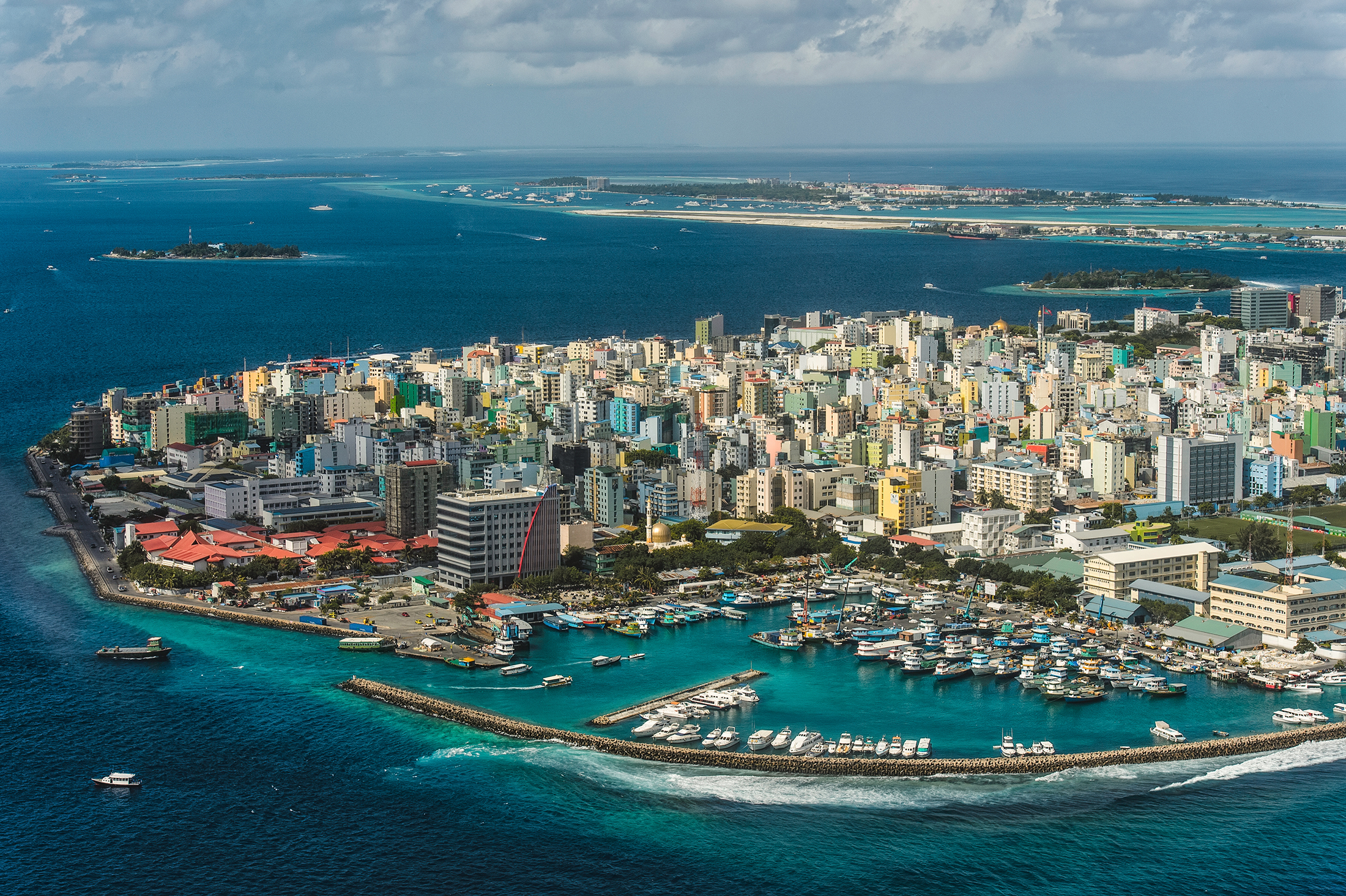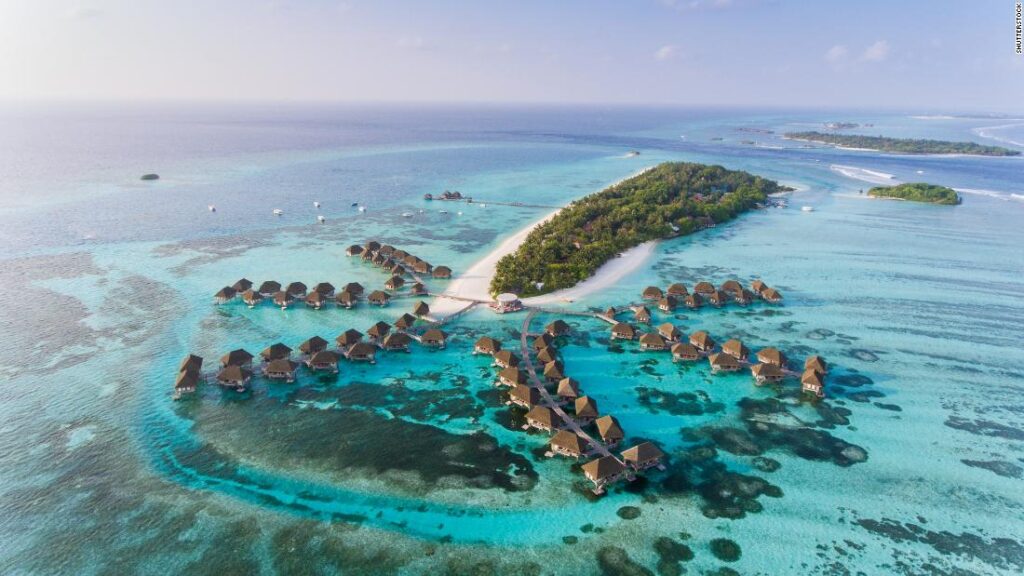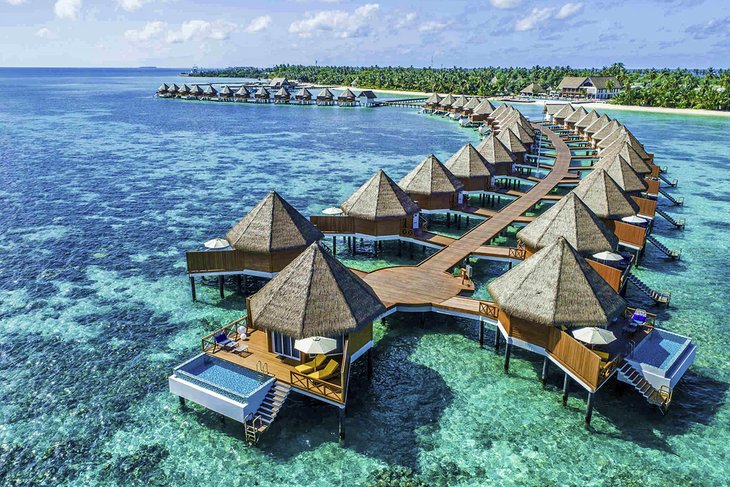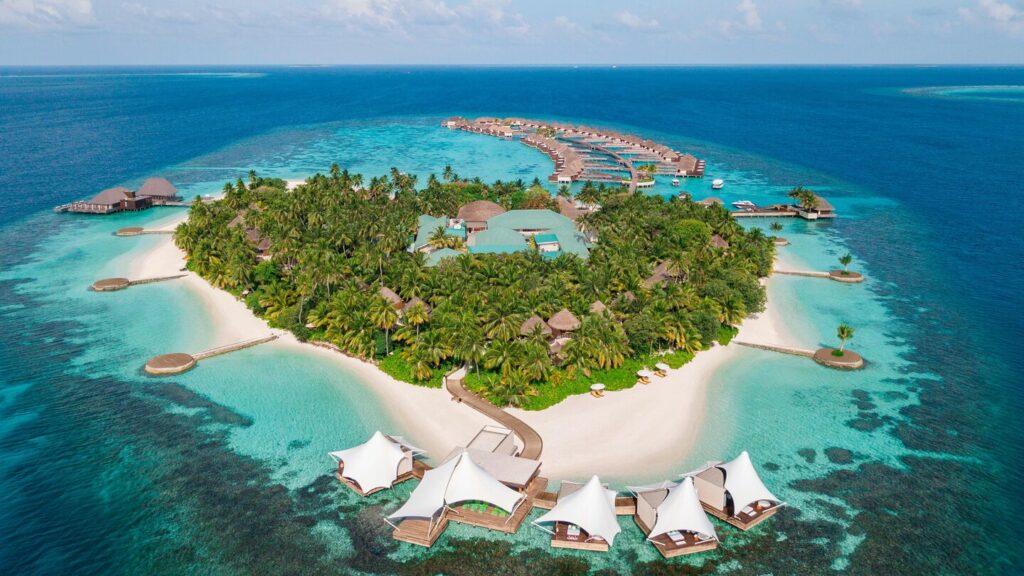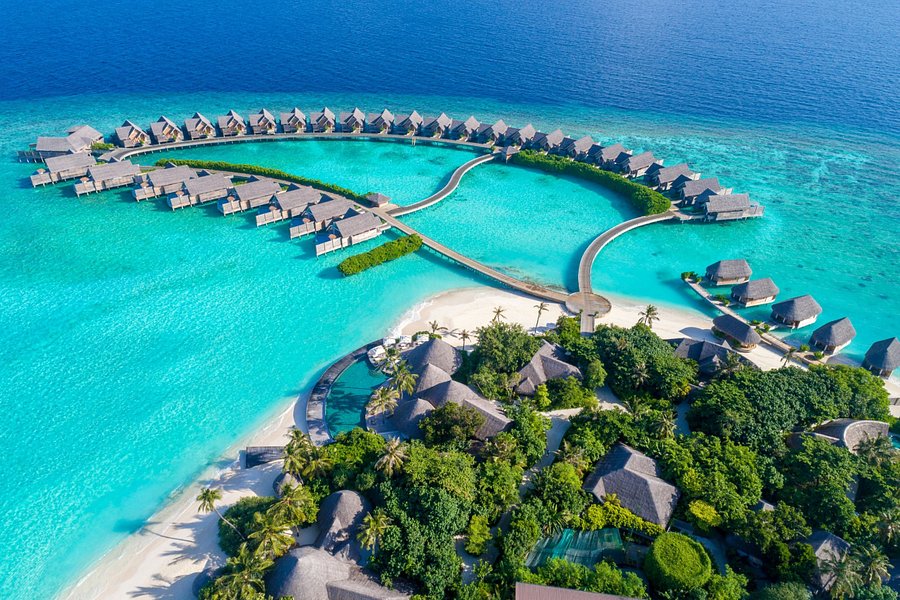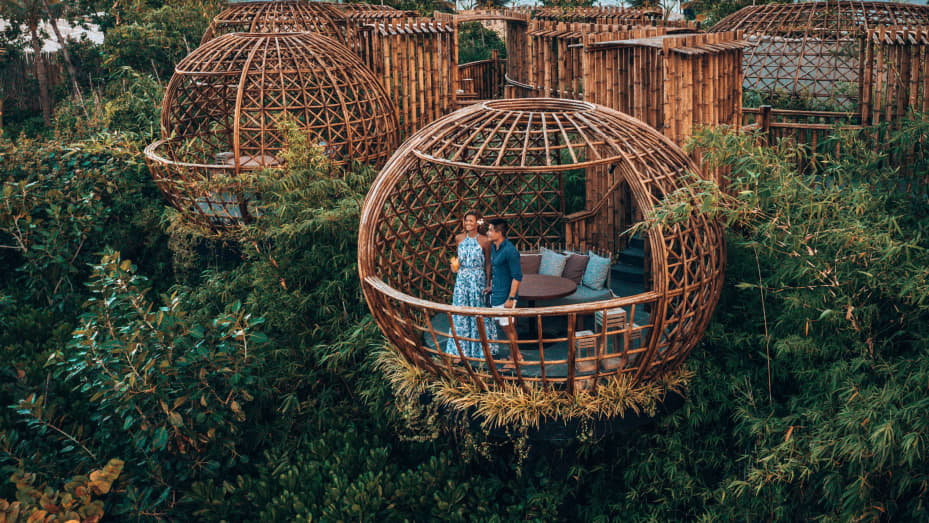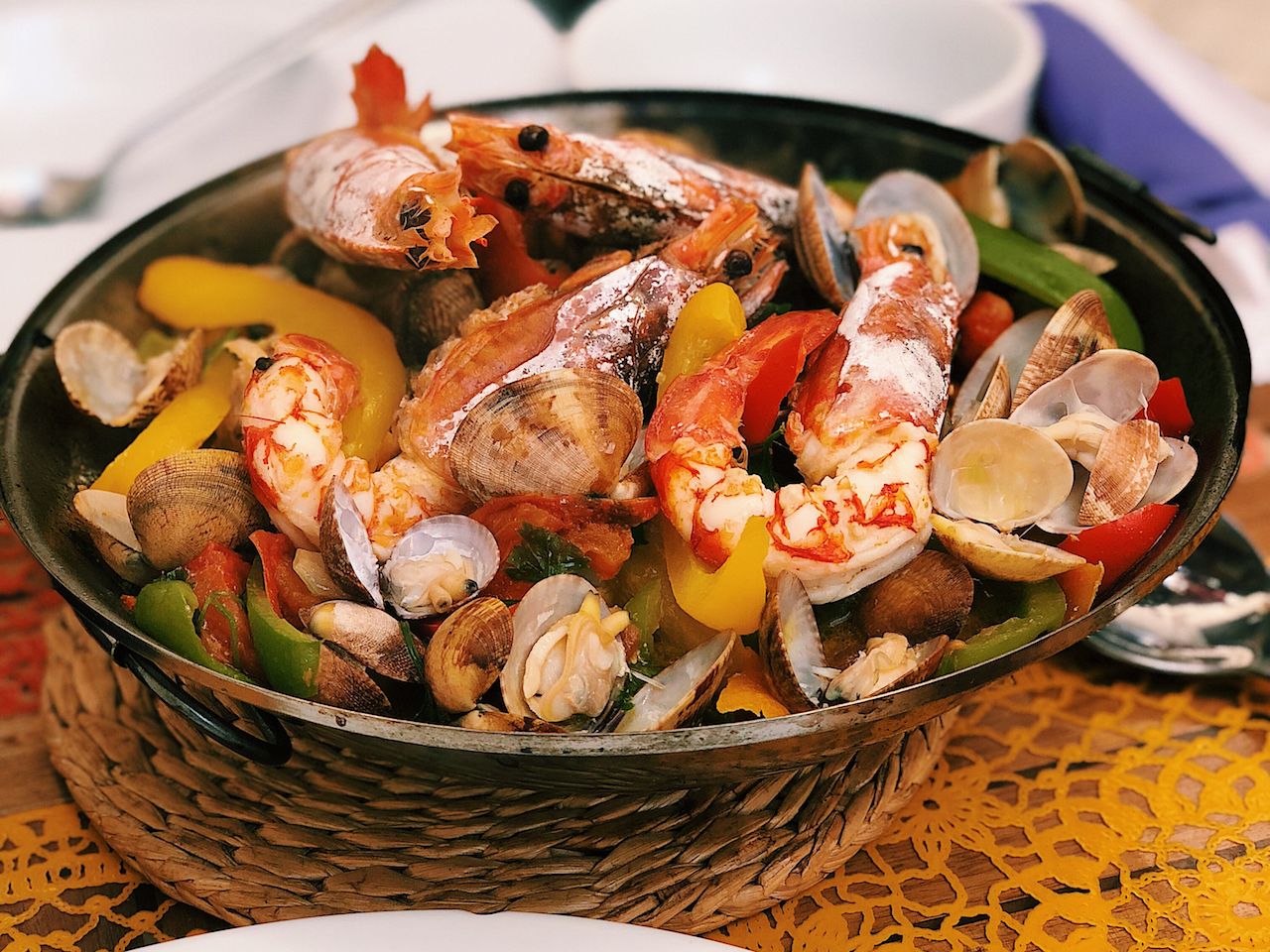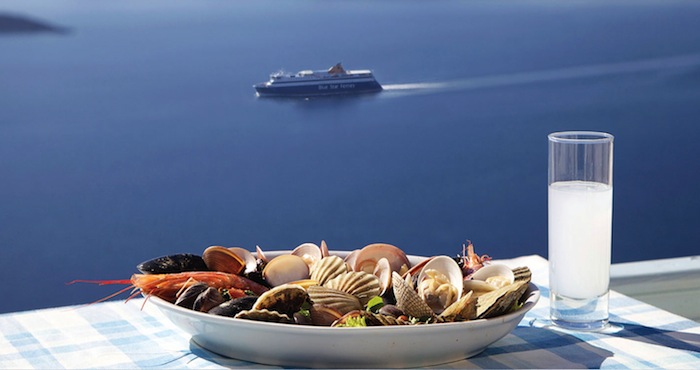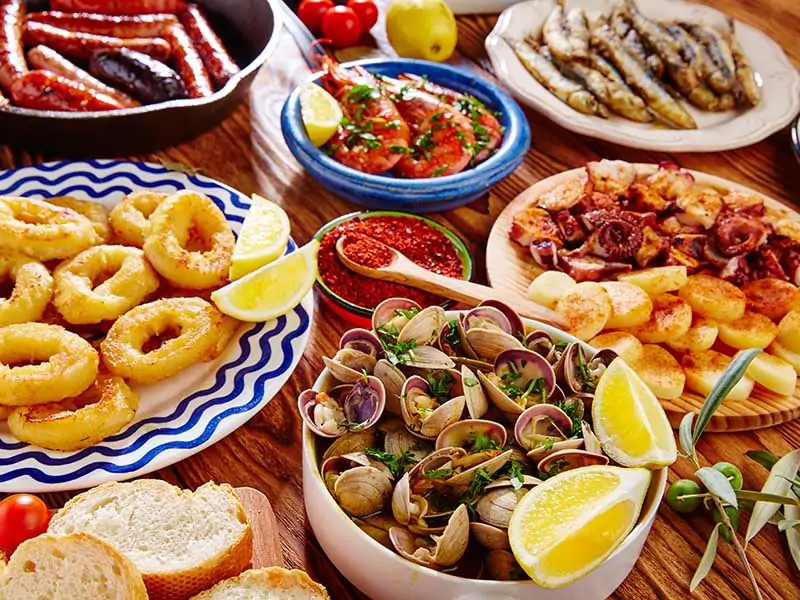Most Beautiful Islands, Maldives, territorial and tourism issues
The Republic of Maldives consists of 21 atolls and four reef platforms that straddle the equator in the northern Indian Ocean. Comprising 2041 reefs and 1190 reef islands, the archipelago is globally unique in the reef structures it possesses of a submarine ridge that stretches from the islands of the Lakshadweep (Laccadives) group in the north to the Chagos archipelago in the south.
The archipelago consists of a double chain of atolls on either side of an inner sea, tapering to single atolls to the north and south (Fig. 1). The basement rocks of the atoll chain are Eocene volcanics (55 million years old), which are capped with over 2000 m of Tertiary limestones. The atoll system has not formed according to the model of subsidence proposed by Charles Darwin. Rather, carbonate accumulation through the Tertiary has been dominated by lateral progradation from the outer twin atoll chain toward the inner sea. During the Quaternary, vertical reef growth has dominated over lateral progradation. This vertical growth is controlled by oscillations in sea level, with solution lowering of reef platforms and lagoons during low sea-level stages and vertical accretion at times of higher sea level.
CORAL REEFS AND ATOLLS
The Maldives consists of 2041 individual reefs, with a total reef area of 4513 km2. This complex network of reefs is organized into a number of distinct atoll and reef types. Open atolls are the dominant atoll type (16 in total) and are characterized by heavily dissected atoll rims, which in plan form appear as a sequence of individual reef platforms enclosing a central lagoon. Open atolls are large structures, ranging from 290 to 3790 km2 in area, that contain numerous lagoonal reefs and collectively account for 99.5% of all Maldivian reefs. A striking feature of Maldivian open atolls is the presence of faros, ring-shaped coral reefs located within atoll lagoons. At a global scale, faros are scarce, yet they are abundant in the Maldives, where their formation remains a puzzle. There are fi ve closed atolls in the archipelago, which are smaller in area than open atolls and have near-continuous reef platforms enclosing lagoons. Four oceanic reef platforms also occur. These reefs have no lagoon, and islands cover a large proportion of the reef surface.
REEF ISLANDS
The archipelago contains 1190 reef islands perched on top of reef surfaces, 200 of which are inhabited. The islands provide the only living space for the Maldivian population of approximately 330,000. Mid-Holocene in age, the reef islands formed during a major phase of deposition 5500–4000 years ago. Composed entirely of carbonate sands and gravels derived from the surrounding reefs, the islands are typically small and have a mean elevation of less than 1 m above sea level. They are dynamic landforms that exhibit rapid morphological adjustments in response to changing climatic (particularly wave-energy) and sealevel conditions.
The Maldives is a group of islands, each being equally beautiful. All the islands are formed by the debris of corals which add to the beauty of the islands. It is the lowest country in the world regarding altitude. The climate of Maldives can be categorised as tropical, and it is home to a range of marine life like coral reefs, fishes, sea turtles, whale, dolphins, among others. In the recent years, the environment of Maldives has taken a hit due to climate change which has resulted in the rise of sea levels thus making it at the risk of flooding.
Crime rates are very low in the country and there is very little reason to feel unsafe while you travel in Maldives. Unlike other destinations, most visitors generally stay in the resorts that are spread across various islands, connected to each other only by water.
Exceedingly expensive, and becoming more so by the year. Angaga is probably one of the most expensive 3* resorts in the world! Prices do drop quite a lot in the wet season – say May to November – but the Maldives is still expensive. It is not just the cost of accommodation but also the cost of food and drink.
The Republic of Maldives, a small nation located in the Arabian Sea of the Indian Ocean, is amongst the most picturesque and scenic nations in Asia. It is an increasingly preferred destination for families and honeymooners. The Maldives is hot and sunny all year round, with average temperatures of 23ºC-31ºC.
So, a trip to the Maldives for two people for one week costs on average MVR51,775 ($3,351). All of these average travel prices have been collected from other travelers to help you plan your own travel budget. A vacation to the Maldives for one week usually costs around MVR25,888 for one person.
Maldives will be reopening its borders to tourists of all nationalities on 15th July 2020. There will be no further incoming travel restrictions to the country. Read the full statement by the Ministry of Tourism here.
In fact, there are a lot of unwed couples that fly to the Maldives for a vacation. There are also a number of marriage proposals done in this country. So, yes, unwed couples can safely visit the Maldives. The Maldives is a country that welcomes couples, whether married or unmarried.

